Some confusion arises around St. John’s wort. Is it perennial or annual? Is it an herbaceous plant or a woody shrub? Is it evergreen or deciduous? The answer, of course, is it depends. The common name St. John’s wort is used to cover many species in the genus Hypericum, almost 500 in fact. Thus, the confusion.

While there are hundreds of species, only a few are commonly cultivated. Popular selections include H. kalmianum, H. frondosum, and H. hidcote, as well as H. perforatum.
Jump to:
- Invasive species alert
- St. John’s Wort Characteristics
- How To Grow St. John’s Wort From Cuttings
- To Propagate St. John’s Wort Plants from Softwood Cuttings
- How to Propagate St. John’s Wort Plants by Division
- How to Propagate St. John’s Wort by Layering
- To layer a St. John’s wort:
- How to Grow St. John’s Wort from Seed
- Tips for Growing St. John’s wort
- Soil, Sunlight, and Fertilizer Needs of St. John’s wort
- How To Prune Your St. John’s wort
Invasive species alert
Hypericum perforatum is listed as an invasive species by the USDA. Others, like Hypericum sphaerocarpum and Hypericum prolificum are natives that may even be a threatened species in your region. Use the botanical name to check, as many different common names abound. If you grow H. perforatum, keep it under close supervision, and don’t let it fruit so the birds won’t spread the seeds.
St. John’s Wort Characteristics
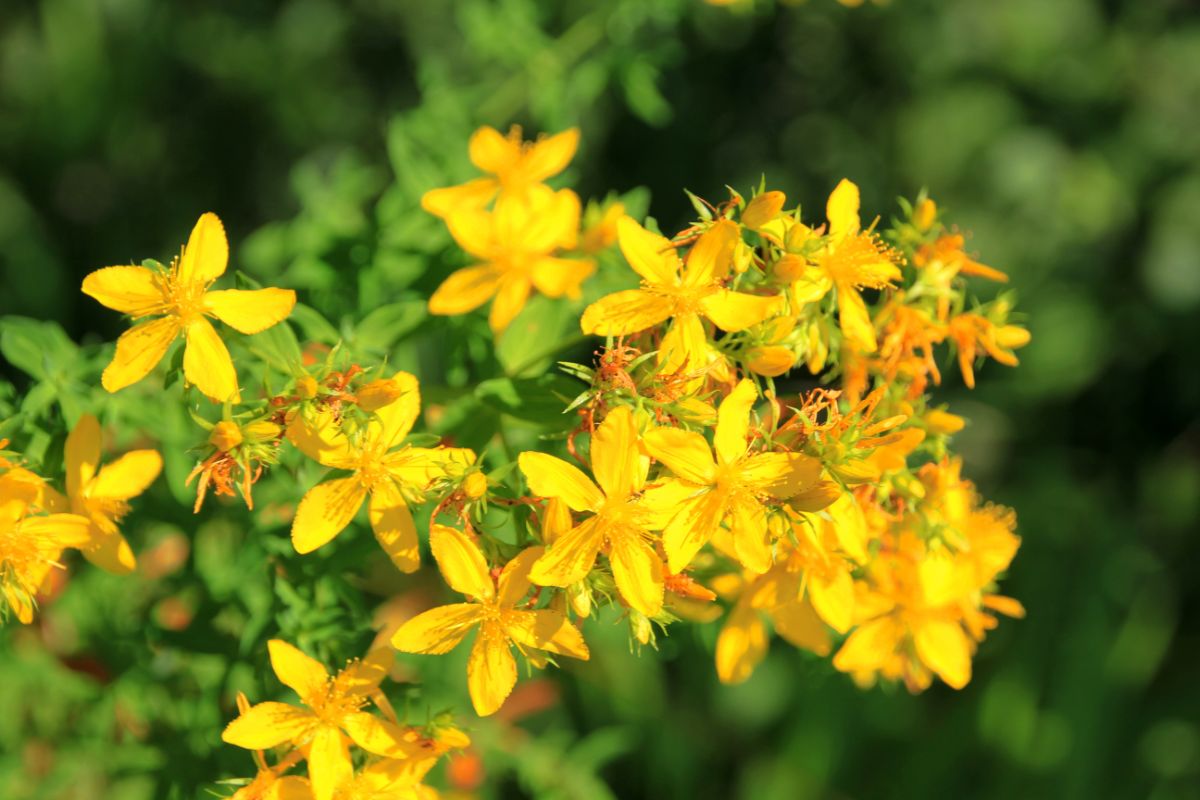
St. John’s wort has been valued as a medicinal plant for thousands of years, but it is also a beautiful and functional plant in your landscape. With sizes ranging from ground cover to 4 feet tall, it makes an excellent addition to your foundation screens, perennial beds, hedges, and rock gardens. St. John’s wort is drought tolerant once established and isn’t picky about its soil. Beloved by pollinators, St. John’s wort is a favorite of bees.
Most St. John’s wort cultivars begin flowering in early summer and will be absolutely covered in yellow blooms! They can be sheared after the initial flush to encourage reblooming throughout the summer.
As their popularity has increased, prices for St. John’s wort live plants at the nursery have also climbed. Fortunately, they can be started from seed and cuttings, division, and even layering. They are quite willing to be propagated.
How To Grow St. John’s Wort From Cuttings
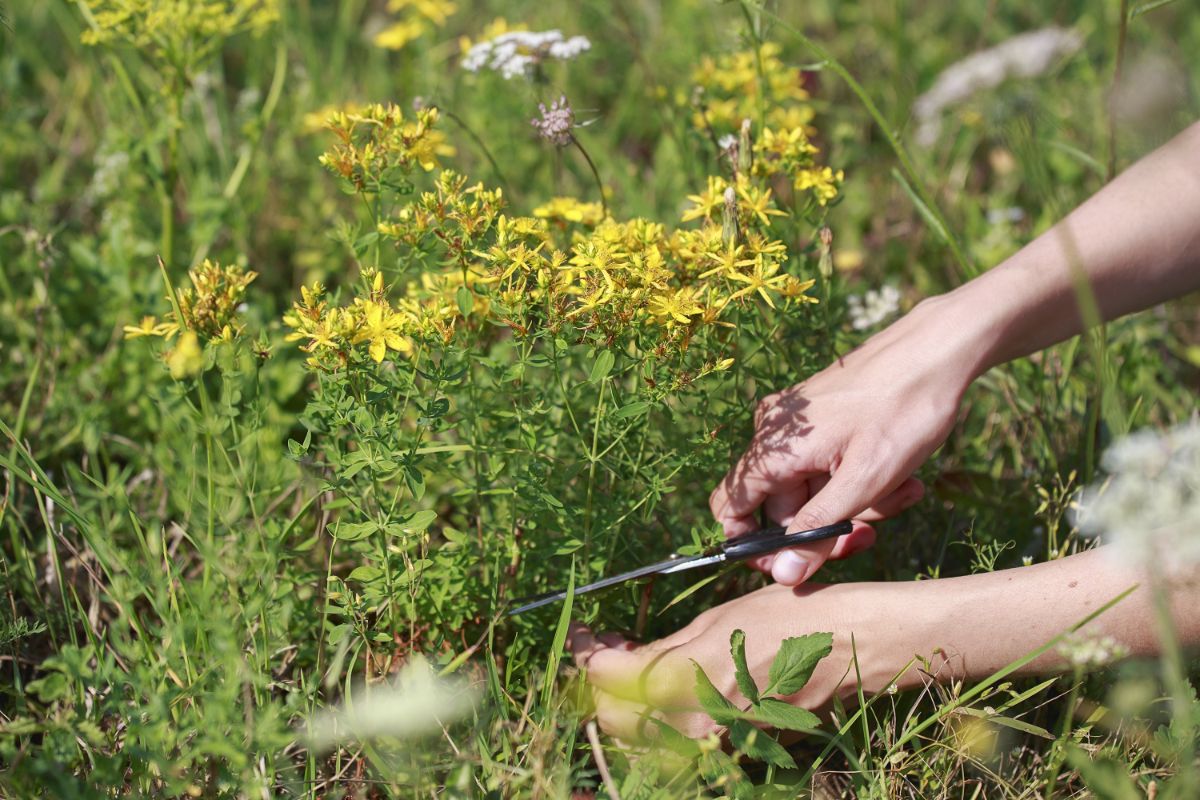
Terminal cuttings, that is, cuttings that include the growing tip, root easily when taken as softwood or semi-hardwood cuttings, anywhere from June through September. Hardwood cuttings can also be used.
To Propagate St. John’s Wort Plants from Softwood Cuttings
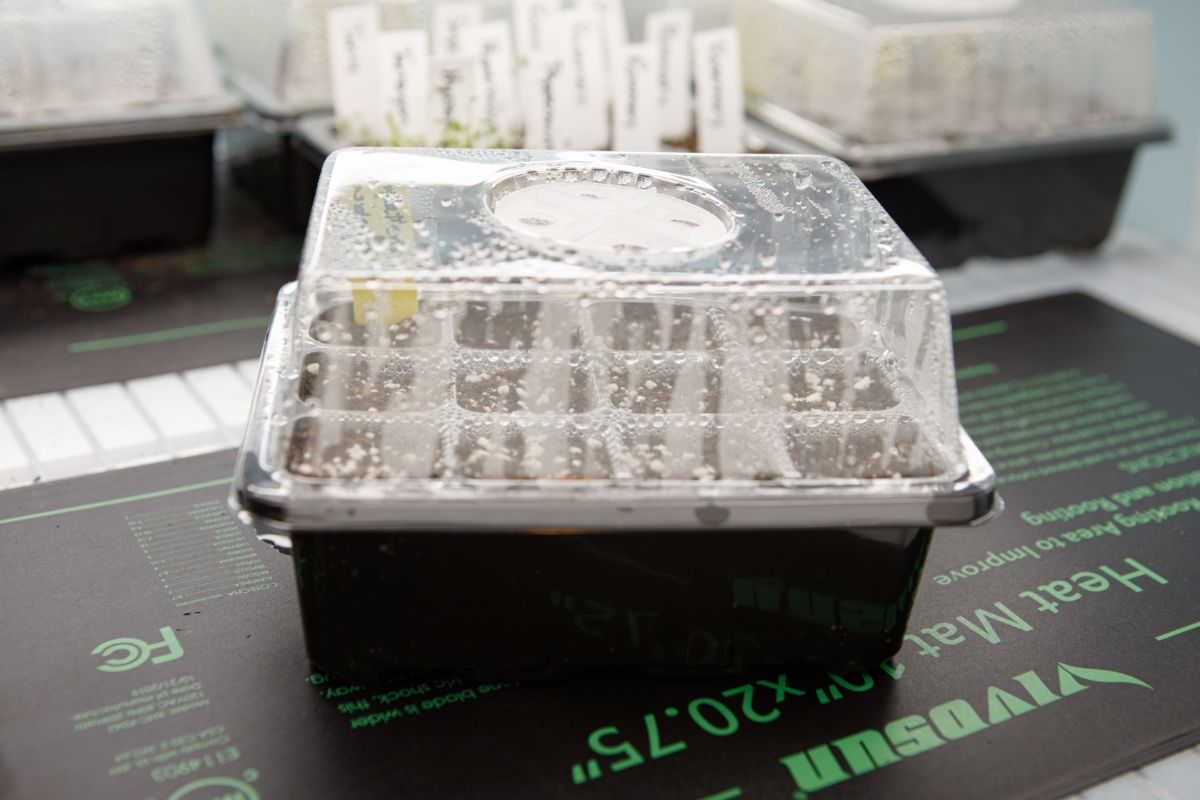
- Select a piece of stem 4-6 inches long from this year’s growth. It should be green, not brown and woody.
- Trim it off with sharp scissors or secateurs just below a node.
- Gently remove the leaves from the bottom two or three nodes, leaving only the top pair of leaves. These stripped nodes are where roots will develop.
- Keep the cuttings in the water and out of the sunlight after harvesting them from the plant. Don’t let the freshly cut ends dry out while you work.
- Fill a container or pot with a well-moistened medium of your choice. A 1:1 mix of coco coir and perlite works well.
- Moisten the end of the stem and dip it in a rooting hormone. Cuttings dipped in a 1000ppm IBA powder or solution show excellent results.
- Poke a hole with a pencil or stick and then carefully place the St. John’s wort cutting down into the hole. Avoid brushing off the rooting hormone. Multiple cuttings can be placed several inches apart in the same container and repotted later once they have rooted.
- Firm the medium around the stem and place it in a bright location out of direct sunlight.
- Cover the pot or container with a humidity dome or a clear plastic bag to keep the humidity levels high. Mist as necessary to prevent desiccation.
- Most Hypericum softwood cuttings will root in 4 weeks if prepared as above. You can check the progress of your new St. John’s wort roots by gently giving them a little tug. If there is resistance, your cutting has grown roots.
St. John’s wort cuttings transplant well and will continue to grow if given a little general-purpose fertilizer every other week when watered. Once they are large enough, they can be hardened off if needed and planted out.
If you live in an area that freezes, get them in the ground no later than a month before heavy frosts to give the plant time to establish before going dormant for the winter.
How to Propagate St. John’s Wort Plants by Division

Many shrubs cannot be propagated by division, but St. John’s wort can. Follow these steps.
- In early spring, while it is still dormant (no leaves broken out), carefully dig around the entire plant and remove it from the ground. Take a wide bite–don’t go to close and damage the roots more than necessary.
- Cut any broken roots, and remove any that look unhealthy or rotted.
- Using a soil knife or spade, gently divide the root mass into several pieces, ensuring each section has at least one stem and attached roots.
- Replant each new section, adding compost to the soil.
- Mulch around the new plantings and water them well. The soil should be consistently moist but not waterlogged until the new plants are established.
- Keep an eye on the divisions for the first few months to ensure they are not suffering from moisture stress or pests.
How to Propagate St. John’s Wort by Layering
St. John’s wort will also root from a method called layering. Essentially, you are just bending an existing low-growing stem to the ground and holding it there until it roots. Layering is less stressful to the parent plant and the new plant but takes time.
To layer a St. John’s wort:
- Locate a low-growing stem on the plant that is flexible and has leaves.
- Make a small incision on the stem about 2 inches from the tip using a sharp, clean pair of shears. Don’t cut all the way through; you are just making a wound to stimulate growth.
- Bend the stem to the ground and bury the incised area under the soil.
- Secure the stem with a U-shaped piece of wire, a wooden peg, or a small rock.
- Keep the soil consistently moist but not soggy.
- Within a few weeks, roots should form at the incision site, and by the following spring, the layered stem can be cut from the parent plant and transplanted.
How to Grow St. John’s Wort from Seed
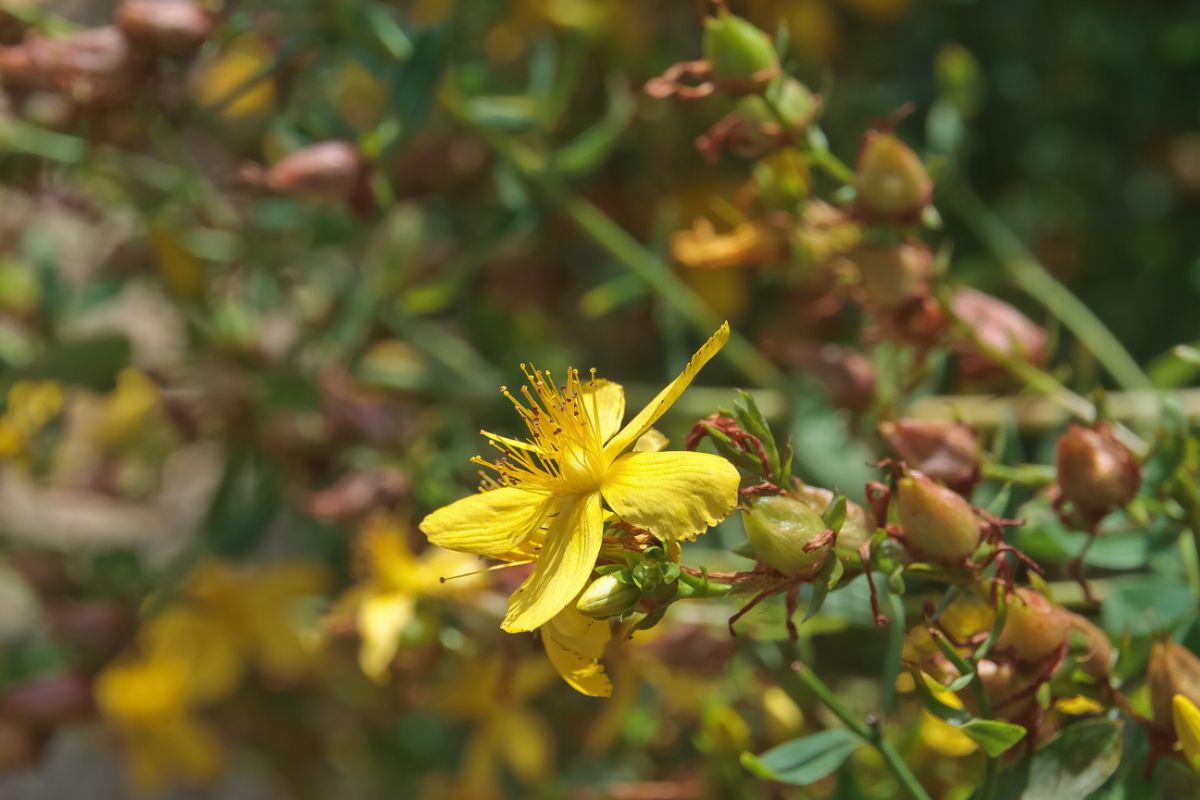
You may be surprised to learn that St. John’s wort will propagate readily from seed. You can purchase seeds online or collect your own if you or a friend has a plant. To collect seeds, harvest the capsules in mid-fall (September/October) and dry them.
Once dried, extract the seeds. Most varieties germinate within 2-3 weeks after sowing, although some may take as long as several months. Germination success is excellent.
- Prepare a tray or cells with a damp seed starting mix.
- Place seeds on top of the medium and press them lightly into the soil but do not cover them; light is needed for germination.
- Keep the soil surface misted, or cover it with plastic wrap or a humidity dome.
- Once sprouted, remove the dome and water from below, maintaining the soil at the slightly damp stage. Don’t let your seedlings dry out.
- Provide plentiful light.
- Fertilize with a dilute general-purpose liquid fertilizer once seedlings are established.
Tips for Growing St. John’s wort
The tips below will help your St. John’s wort look its best, but they can be mostly ignored and still cover themselves with blooms as long as they have a sunny spot and adequate rainfall.
Soil, Sunlight, and Fertilizer Needs of St. John’s wort

St. John’s wort likes full sunlight but will make do with partial sun, especially in warmer areas. It needs soil with good drainage and slightly acidic to neutral pH.
Once established, fertilizer should not be required. However, if your soil is poor and growth is slow, a spring treatment of pelletized slow-release fertilizer can be added.
St. John’s wort likes evenly moist soil but not waterlogged. Mulching under your shrubbery can help maintain moist, cool soil, reduce the need for watering, and help control weeds.
How To Prune Your St. John’s wort
Pruning is an essential step in maintaining healthy St John’s wort. Pruning will control the size and shape of the plant and promotes reblooming.
- Prune St John’s wort is after it has finished blooming in the late summer or early fall.
- When pruning, remove any dead, diseased, or damaged stems.
- Cut back the remaining stems by about one-third of their length. This will encourage the plant to produce new growth, which means more blooms the following year.
- Repeat this process yearly to keep your St. John’s wort healthy and full of blooms.
Tip: pruning larger patches of St. John’s wort can be done with a hedge trimmer.



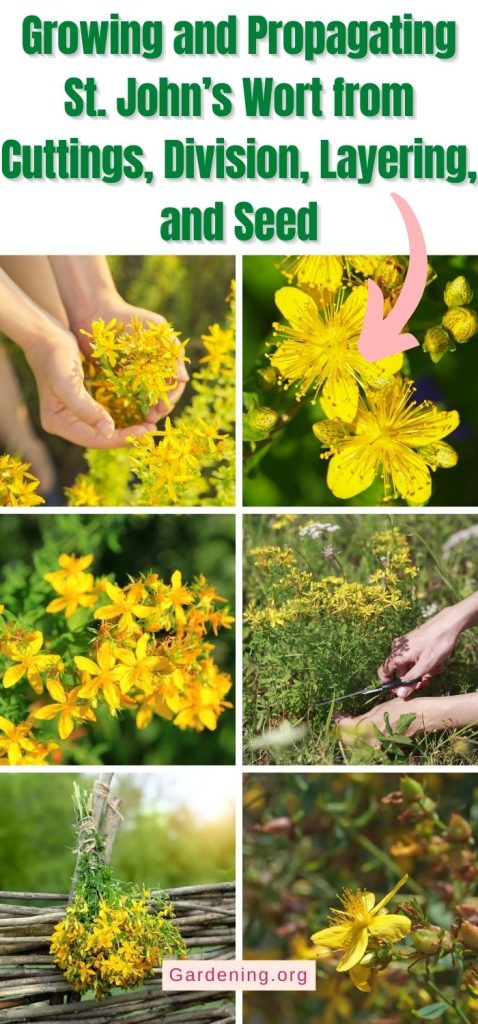





Leave a Reply